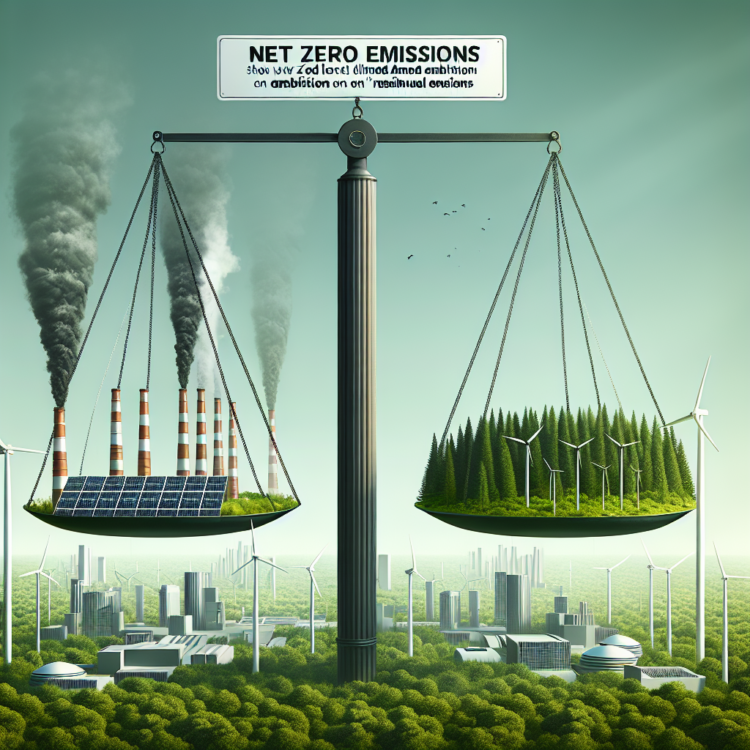New research by the University of East Anglia (UEA) reveals what countries think will be their most difficult to decarbonise sectors when they reach net zero, with agriculture expected to be responsible for the largest remaining emissions.
New research by the University of East Anglia (UEA) reveals what countries think will be their most difficult to decarbonise sectors when they reach net zero, with agriculture expected to be responsible for the largest remaining emissions.
Once countries have taken the ‘easy’ steps to get to net zero – such as switching to more renewable electricity, electric cars, and heat pumps for homes – they are still left with some sources of emissions.
These ‘residual’ emissions continue to be emitted at the point of net zero – but their effect is cancelled out or moved elsewhere, for example by taking carbon dioxide out of the atmosphere using methods of carbon dioxide removal, or to other countries via international offsets.
Harder to decarbonise areas include aviation, agriculture, and industry, with fewer alternatives to fossil fuels. Residual emissions are expected to come from these ‘hard-to-abate’ sources, which face technical barriers to reducing them beyond a certain level.
By sector, emissions from agriculture, mainly from livestock, are anticipated to be the largest contributor – on average 36% of the total for developed countries. The findings are published today in the journal One Earth.
The team, from the Schools of Environmental Sciences, Global Development and Tyndall Centre for Climate Change Research at UEA, analysed national climate strategies for 71 countries. Only 26 quantify residual emissions, with most aiming to reach net zero by 2050.
The researchers mapped the reasons why a country claims a certain emission source is residual or otherwise hard-to-abate, finding that many see residual emissions as an inevitability, instead of a focus of further climate policy efforts, innovating further solutions or exploring other policy options, such as reducing demand.
Lead author Harry Smith, a Leverhulme Trust Doctoral Scholar at UEA, said current plans showed limited ambition in dealing with residual emissions: “Net zero targets have rapidly become the new norm of national climate policy. They imply a need to compensate for the remaining residual emissions through the deployment of carbon dioxide removal methods. Yet governments are only now exploring what this balance could or should be.
“High residual emissions, paired with greater deployment of carbon dioxide removal, may allow countries to retain or expand fossil fuel use and production. Given the limits of carbon dioxide removal, this risks the credibility of their target and may jeopardise global climate goals.
“Similarly, treating residual emissions as an inevitability, risks de-emphasising these emissions, locking-in high emitting activities and infrastructure, and locking-out other ways to reduce emissions.”
The study is the first to look in this level of detail, and for this number of net zero plans that describe what countries think will be their difficult to decarbonise sectors, and how low they aim to get their emissions before cancelling out the remainder with carbon dioxide removal.
The authors found that some countries, such as the UK and Spain, are ambitious, including scenarios that reduce their emissions by upwards of 90% compared to when their emissions started falling, leaving less than 10% of their emissions as residual and cancelled out by carbon dioxide removal.
However, others, such as Canada, are less ambitious and have drawn up scenarios that retain greater fossil fuel use and production, reducing their emissions by just over a half before cancelling out the remainder.
For developed countries, residual emissions are sizeable, on average 21% when compared to when their greenhouse gas emissions started falling. This average hides a large range, however: they could be as low as 5% or as high as 52%.
As well as making up the majority of residual emissions, agriculture represents the sector which sees the least progress between now and net zero, with a reduction of only 37% on average for the same countries. Meanwhile industrial emissions from the manufacturing of goods, emissions commonly discussed as residual and hard-to-abate, are reduced by 70% on average.
“Our study shows that countries vary greatly in how they envision what getting to net zero means for them,” said co-author Dr Naomi Vaughan. “Some use the reporting of emission and carbon removals together to hide their weaker emissions reduction ambition by betting on currently very niche carbon removal methods. We suggest that strengthening the reporting requirements would improve transparency.
“This work highlights that what emissions remain when countries aim to reach net zero should be put under more scrutiny. A better understanding is needed of which emissions are truly ‘difficult to decarbonise’ and which could be addressed through changes to demand, for example dietary changes, reducing flying, the circular economy, alongside more investment in research and innovation.”
The study examined all national climate strategies submitted to the UN Framework Convention on Climate Change before October 2023, as well as similar strategies submitted to the European Commission.
‘Residual emissions in long-term national climate strategies show limited climate ambition’, Harry Smith, Naomi Vaughan and Johanna Forster, is published in One Earth on May 9.
Journal
One Earth
Article Title
Residual emissions in long-term national climate strategies show limited climate ambition
Article Publication Date
9-May-2024




